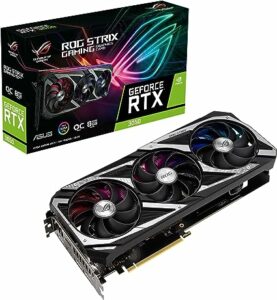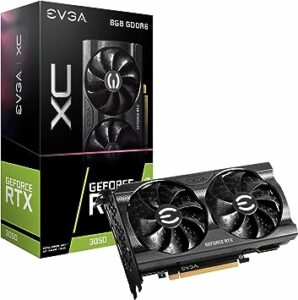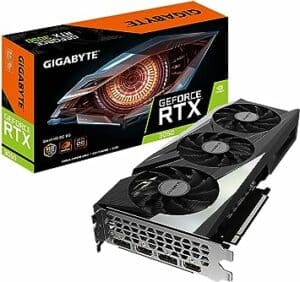Best RTX 3050 GPU in 2025 – The top picks

Table of Contents
Navigating the dynamic landscape of graphics cards can be overwhelming, especially when considering options like the Nvidia RTX 3050. This article aims to dissect the features and capabilities of various RTX 3050 graphics cards, allowing you to make a well-informed decision tailored to your needs. With an abundance of manufacturers, designs, and performance metrics to sift through, selecting the ideal card may seem daunting. However, fret not, as we’re here to simplify the process and ensure your PC is equipped with top-notch components. So, let’s delve into the best RTX 3050 GPU, shall we?
Full Product Review: Nvidia RTX 3050
Products at a Glance
How we picked the best RTX 3050 GPUs
To find the best RTX 3050 graphics card, we look at a few things. First, we test how well each card performs in different games and tasks. We want to make sure they do what they’re supposed to. But it’s not just about performance. We also check what users say about the cards, how reliable the company is, and if they offer good support after you buy. These are important because graphics cards are expensive, and if something goes wrong, you’ll want help. We also consider how much the card costs and how well it handles the toughest games. These are key factors when picking a graphics card.
Interested in more buying guides? We also have guides on the best overall graphics cards and the budget graphics cards available now. Be sure to check them out.
Product Reviews
- Top-tier cooling system
- Customizable performance settings
- Sleek design with RGB
- Steep price point
- Ray tracing performance could be better
- Less value for money
Our first choice for the best RTX 3050 GPUs is the Asus ROG Strix edition. This robust ASUS card boasts dimensions of 11.81 x 5.26 x 2.11 inches, making it sizeable but well worth the space it occupies. With frequencies ranging from 1860 MHz in Gaming Mode to a boosted 1890 MHz in OC Mode, the ASUS ROG Strix Nvidia GeForce RTX 3050 OC delivers formidable power. Additionally, with a memory bandwidth of 224GB/s and a recommended PSU requirement of 300W, it’s evident that this card is engineered for high performance.
The ASUS ROG Strix caters to discerning gamers unwilling to compromise on quality. Its exceptional cooling system ensures optimal performance even during prolonged gaming sessions, alleviating concerns about overheating. The inclusion of ASUS GPU Tweak III provides enthusiasts with comprehensive control over their GPU’s performance, adding a valuable layer of customization.
- Quiet performance
- Ability to overclock well
- Excellent thermal cooling
- Ray tracing capabilities
- High price for solid performance (some will expect more)
- Not able to reach above 1080p
The PNY Nvidia RTX 3050 has decent performance for 1080p gaming, utilizing the Nvidia Ampere architecture, which offers good performance for playing modern games at 1080p resolution. For creatives and content creators, the card has dedicated RT cores that enable ray tracing, a lighting technique that creates more realistic game lighting effects. While not the strongest for ray tracing, it allows you to experience the benefits of the technology.
Like most modern Nvidia GPUs, it supports DLSS (Deep Learning Super Sampling), a Nvidia technology that uses AI to boost frame rates while maintaining good image quality. This can help play demanding games at higher resolutions or frame rates. Additionally, the card boasts 8GB of memory, a good amount for 1080p gaming applications. Compared to higher-end graphics cards, the PNY RTX 3050 also has a lower power consumption rating of 130W.
However, like most RTX 3050 cards, there are more powerful RTX cards available if you need to play games at higher resolutions or with more demanding settings. Likewise, the card is limited to 1080p for high frame rates.
- Excellent value for money
- Crisp 1440p gaming
- Efficient twin fan design
- No RGB customization
- Might require a PSU upgrade
The EVGA GeForce RTX 3050 XC Gaming stands out for its compact size, measuring 7.94 x 1.64 x 4.33 inches. It operates at a base frequency of 1552 MHz, which can ramp up to 1845 MHz with Turbo Boost. With a bandwidth of 224GB/s, it’s recommended to pair this GPU with a 550W PSU.
Designed for gamers seeking robust performance without a hefty price tag, the EVGA GeForce RTX 3050 XC Gaming offers an appealing proposition. It caters to players who prioritize Ray Tracing and smooth 1440p gaming without overspending. Given its features and performance, this GPU presents excellent value for its price range, akin to discovering a hidden treasure. While it may not be the top choice for high-end users and may necessitate reviewing your PSU setup, it delivers exceptional gaming satisfaction at an unbeatable price.
- Exceeds advertised clock speeds
- Efficient and affordable Gaming OC cooler
- Solid custom overclocking potential
- Noisy
- Thermal management is not strong - can run hot
Let’s delve into the specifics. Gigabyte’s contribution to the RTX 3050 market features a configuration boasting two Display Ports and 2 HDMI interfaces. Operating with a boost clock of 1815 MHz, Gigabyte demonstrates a commitment to high-performance computing. While the card’s physical dimensions measure at 286mm in length, 115mm in width, and 51mm in height, its exceptional capabilities are indisputable.
For individuals seeking enhanced performance, the Gigabyte GeForce RTX 3050 Gaming OC presents an enticing option. Renowned for exceeding its advertised clock speeds, particularly evident in demanding titles like Cyberpunk 2077, Shadow of the Tomb Raider, and Watch Dogs Legion, it delivers a performance that merits commendation.
This variant of the RTX 3050 showcases remarkable performance, even when graphics settings are set to ultra, maintaining an impressive average frame rate across various applications.
Features and considerations
The RTX 3050, the latest entrant in the 3000 series lineup and built on the Nvidia Ampere architecture, has been lauded for bringing ray tracing capabilities to a more accessible price bracket. Beyond its affordability, the card offers a range of features and a spec sheet that was once reserved for its higher-end counterparts.
DLSS (Deep Learning Super Sampling) ensures improved gaming performance with better frame rates, while its compatibility with NVIDIA Broadcast transforms the rooms of PC gamers into home studios with AI-enhanced video and voice communication tools. However, not all RTX 3050 cards are created equal. Different manufacturers introduce their unique twists, with variations in cooling solutions, clock speeds, and aesthetic designs.
What is the best Nvidia RTX 3050 graphics card?
The ASUS ROG Strix Nvidia GeForce 3050 OC is our top pick for the best RTX 3050 graphics card. The card boasts top-of-the-range performance for the RTX 3050, maximizing the capabilities of performance, specs, and overclocking.
Our Verdict
Navigating the landscape of graphics cards can be daunting, especially with the myriad of options available in the market. The RTX 3050 series, however, stands out for its commendable performance, especially for its price bracket. With various brands vying for attention, this roundup has hopefully made your decision-making process a bit easier. From the superlative cooling solutions of ASUS to the unparalleled price-to-performance ratio of EVGA, it’s evident that there’s an RTX 3050 out there tailored to every gamer’s unique needs.



